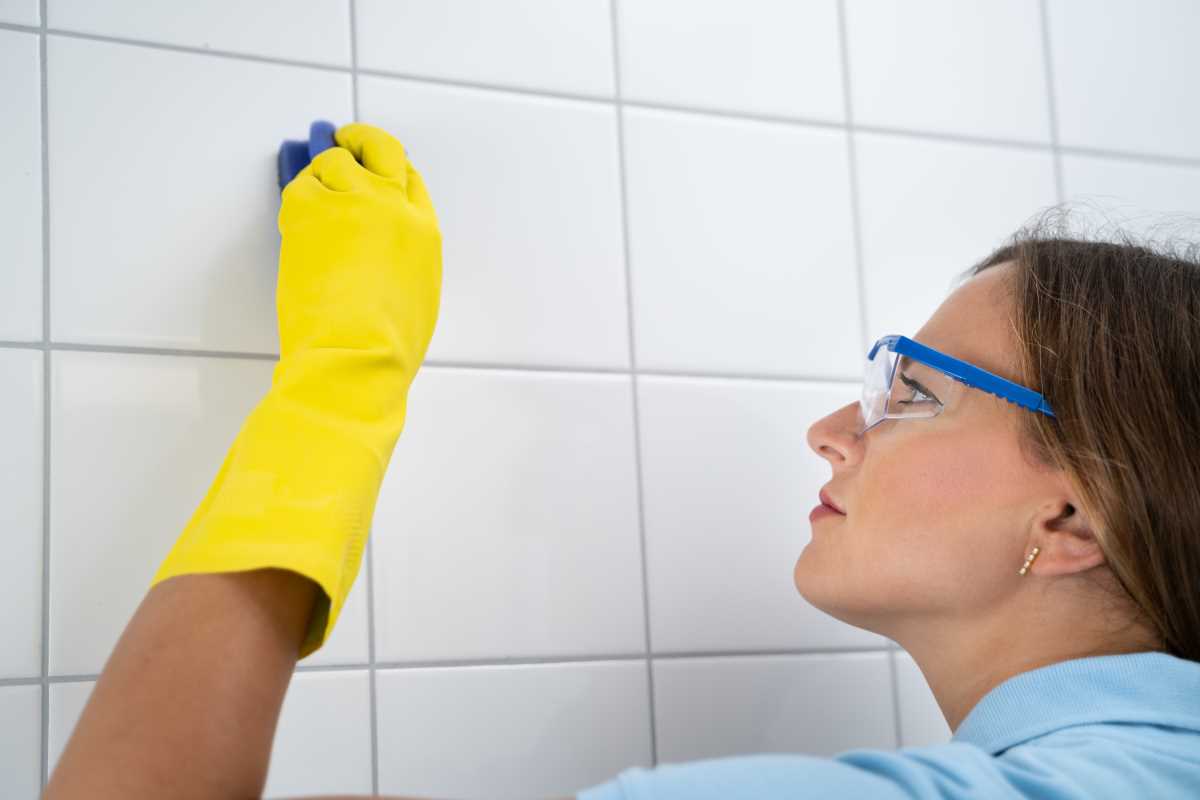Dirty grout can make even the cleanest tiles look shabby and unkempt. While grout cleaning often feels daunting, several easy and effective methods can restore your grout lines to their original glory without requiring professional help. Before starting any cleaning method, ensure that there is proper ventilation and wear appropriate protective gear like gloves and eye protection when using cleaning solutions.
1. Baking Soda and Vinegar Method
This classic, eco-friendly cleaning combination creates a powerful yet gentle cleaning action that is perfect for grout. The chemical reaction between these common household ingredients helps lift dirt and grime effectively while being safe for most surfaces. What you'll need:
- Baking soda
- White vinegar
- Spray bottle
- Soft-bristled brush
- Clean water
- Microfiber cloth
Mix baking soda with enough water to form a paste, then spread it along the grout lines. Spray white vinegar over the paste and let it bubble for 10-15 minutes before scrubbing gently with a soft brush. Work in small sections of 2-3 square feet to prevent the solution from drying before you can scrub it.
2. Oxygen Bleach Solution
Oxygen bleach offers a safer alternative to chlorine bleach while providing exceptional cleaning power for stubborn stains. This method is super effective for heavily soiled grout that hasn't been cleaned in a while. You'll need the following:
- Oxygen bleach powder
- Warm water
- Grout brush
- Clean towels
- Protective gloves
Simply dissolve the oxygen bleach in warm water according to package instructions, apply generously to grout lines, and let it sit for 15-20 minutes before scrubbing. This solution is powerful enough to tackle tough stains but gentle enough to not damage the grout.
3. Steam Cleaning Method
Steam cleaning offers a chemical-free approach that's particularly effective for heavily soiled grout. The high-temperature steam helps break down dirt and grime while sanitizing the surface simultaneously. When using a steam cleaner, always start with the highest point when cleaning vertical surfaces to prevent dirty water from running down clean areas. This requires the following supplies:
- Hand-held steam cleaner
- Microfiber cloths
- Grout brush
- Clean towels
4. Commercial Grout Cleaner
Store-bought grout cleaners can be highly effective when used correctly. These products are specifically formulated to break down grout stains and often contain surfactants that help lift embedded dirt. Keep these steps in mind:
- Test in an inconspicuous area first
- Apply cleaner according to package directions
- Allow 10-15 minutes dwell time
- Scrub grout lines thoroughly
- Rinse completely with clean water
- Dry the area thoroughly
5. Hydrogen Peroxide and Baking Soda Mix
This method provides powerful cleaning action while being gentle enough for regular use. The combination creates an oxygen-based cleaner that removes stains and discoloration. This is what you'll need:
- Hydrogen peroxide (3%)
- Baking soda
- Spray bottle
- Brush
- Clean water
- Dry cloths
Mix equal parts hydrogen peroxide and water in a spray bottle, then sprinkle baking soda along the grout lines. Spray the solution over the baking soda and wait 10 minutes before scrubbing gently.
Maintenance
After cleaning your grout using any of these methods, consider these essential maintenance tips to keep it looking fresh longer:
- Apply grout sealer every 6-12 months
- Clean spills immediately to prevent staining
- Use pH-neutral cleaners for routine cleaning
- Avoid bleach-based products that can erode grout
- Use doormats to reduce dirt accumulation
- Establish a regular cleaning schedule to prevent heavy buildup
For Best Results
If you want the best results for any method of grout cleaning, consider these tips:
- Work in small, manageable sections
- Don't let solutions dry on surfaces
- Maintain consistent pressure when scrubbing
- Keep cleaning solutions away from metal fixtures
- Rinse thoroughly to prevent residue buildup
- Allow areas to dry completely before sealing
 (Image via
(Image via





